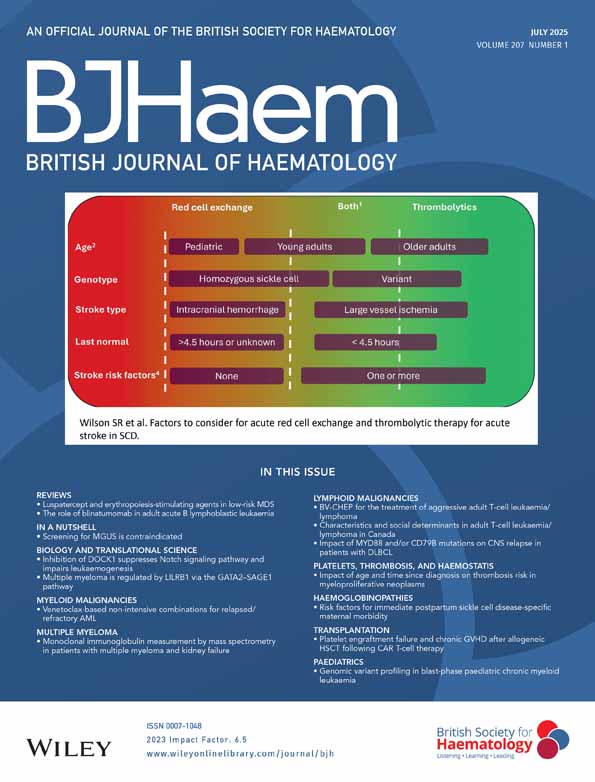Red blood cell phenotypes in the α+ thalassaemias from early childhood to maturity
Abstract
The α+ thalassaemias are the most common single gene disorders of humans, yet little is known about their haematological characteristics in childhood. Blood samples have been collected randomly from more than 2000 individuals in village communities in Vanuatu in the South West Pacific and analysed for α thalassaemia and associated haematological changes. Here we describe the haematological effects of the α+ thalassaemias from early childhood through to maturity in this population. Mean cell volume (MCV) and mean cell haemoglobin (MCH) levels in individuals of normal, heterozygous and homozygous genotype differed significantly from one another throughout the entire age range (2P < 0.05). In contrast, haemoglobin levels in heterozygous and homozygous individuals were well maintained throughout development. Adults of normal genotype attain Hb levels which are indistinguishable from Caucasian reference values, a finding made all the more remarkable given the high frequency of clinical malaria in this population. It is clear from these findings that haematological data are valuable in screening for carriers of α+ thalassaemia in this population. MCH is clearly the most sensitive discriminator. None of the homozygous adults tested had an MCH of >27 pg, whereas <10% of normals had a value of <27 pg. These data provide reference values for areas in which the α+ thalassaemias are common and often confused with iron-deficiency anaemia.




